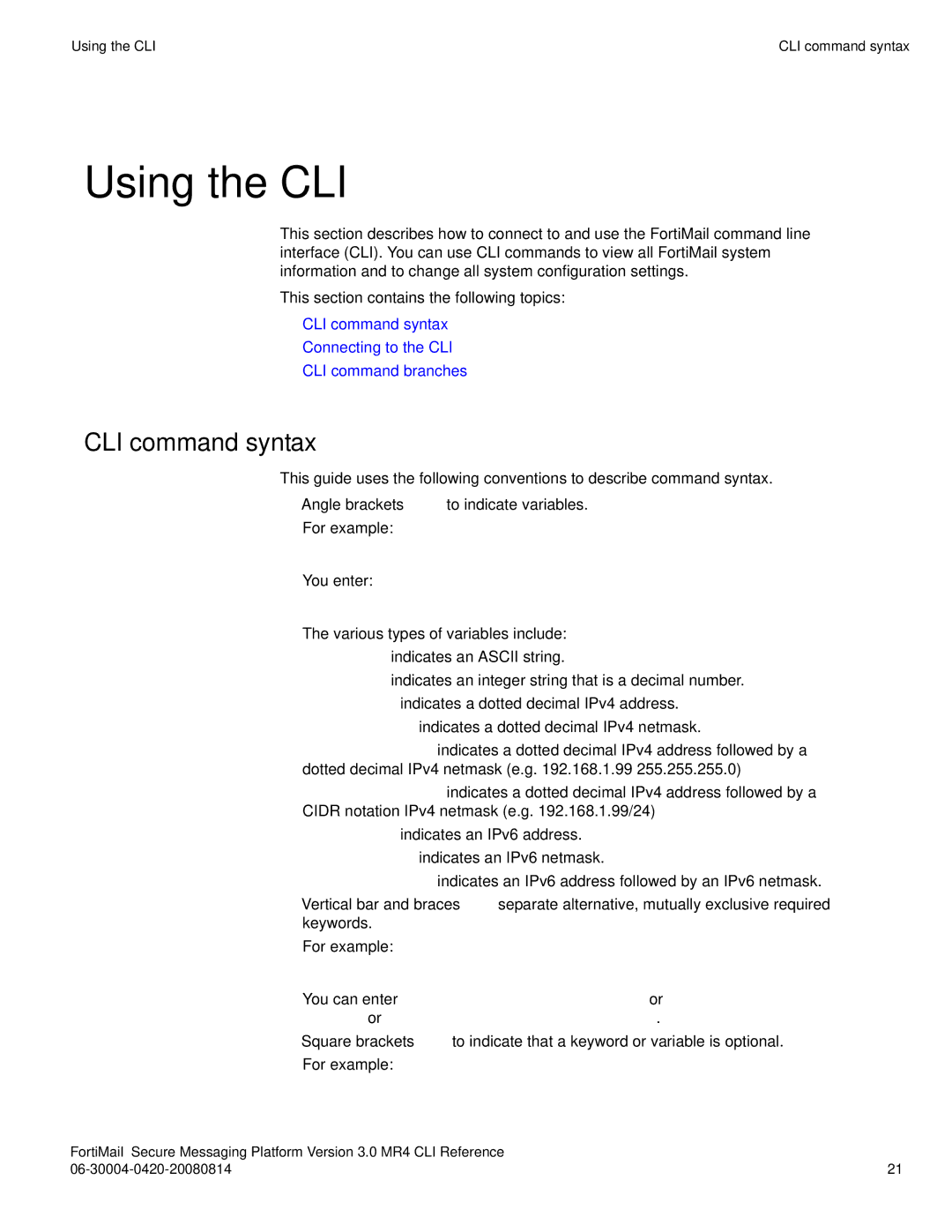
|
|
Using the CLI | CLI command syntax |
Using the CLI
This section describes how to connect to and use the FortiMail command line interface (CLI). You can use CLI commands to view all FortiMail system information and to change all system configuration settings.
This section contains the following topics:
•CLI command syntax
•Connecting to the CLI
•CLI command branches
CLI command syntax
This guide uses the following conventions to describe command syntax.
•Angle brackets < > to indicate variables. For example:
set console page <length_int>
You enter:
set console page 40
The various types of variables include: <xxx_str> indicates an ASCII string.
<xxx_int> indicates an integer string that is a decimal number. <xxx_ipv4> indicates a dotted decimal IPv4 address. <xxx_v4mask> indicates a dotted decimal IPv4 netmask. <xxx_ipv4mask> indicates a dotted decimal IPv4 address followed by a dotted decimal IPv4 netmask (e.g. 192.168.1.99 255.255.255.0)
<xxx_ipv4/mask> indicates a dotted decimal IPv4 address followed by a CIDR notation IPv4 netmask (e.g. 192.168.1.99/24)
<xxx_ipv6> indicates an IPv6 address. <xxx_v6mask> indicates an IPv6 netmask.
<xxx_ipv6mask> indicates an IPv6 address followed by an IPv6 netmask.
•Vertical bar and braces {} separate alternative, mutually exclusive required keywords.
For example:
set system opmode {gateway server transparent}
You can enter set system opmode gateway or set system opmode server or set system opmode transparent.
•Square brackets [ ] to indicate that a keyword or variable is optional. For example:
FortiMail™ Secure Messaging Platform Version 3.0 MR4 CLI Reference |
|
21 |
